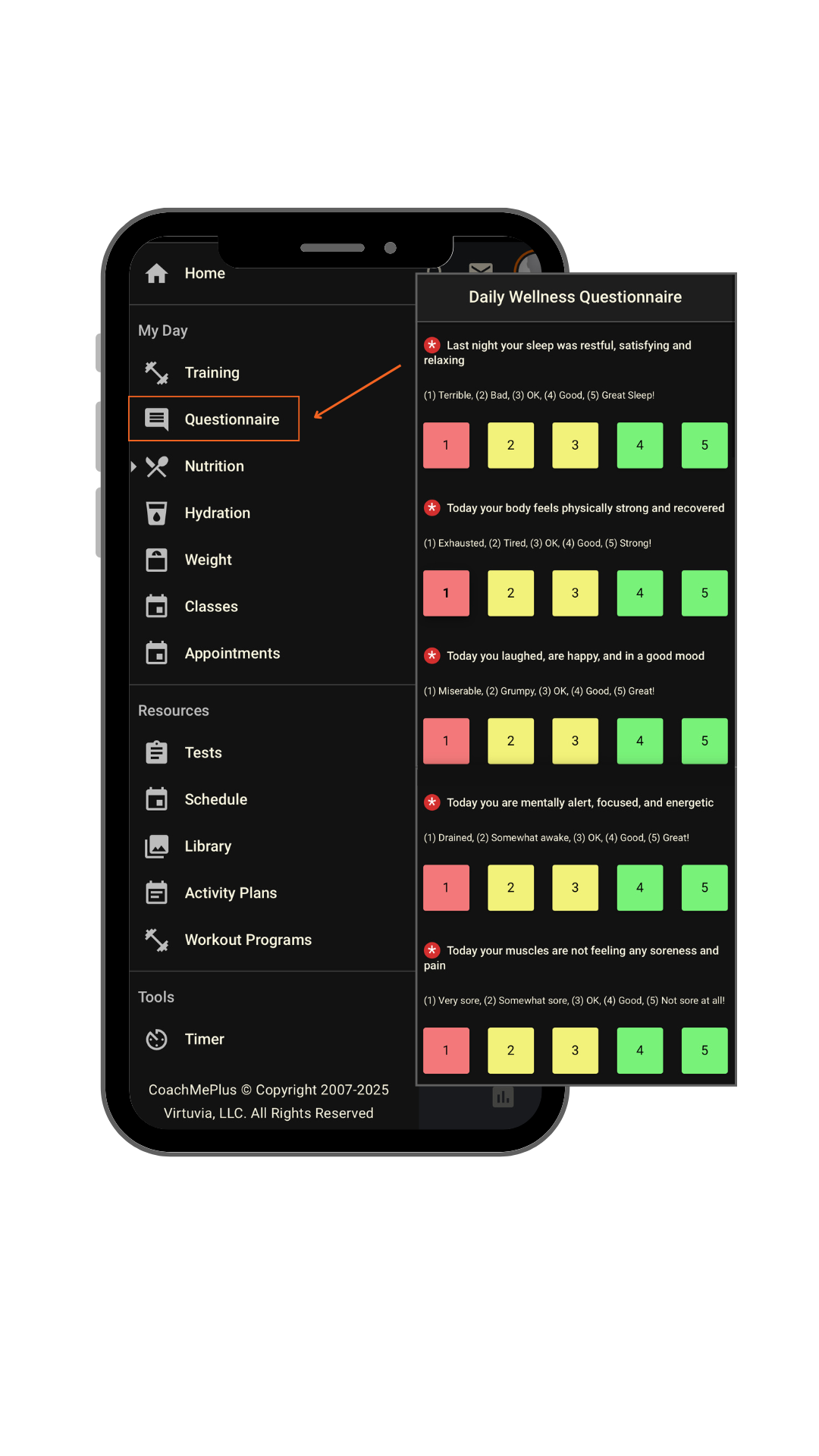Most teams use GPS. Many track heart rate. Some monitor sleep. Few consistently use wellness questionnaires.
In an era where wearable technology and biometric monitoring dominate high-performance sports, teams frequently overlook wellness questionnaires. However, these simple self-report surveys are arguably one of the most cost-effective tools for optimizing performance and mitigating injury risk.
What the Data Shows
Wellness questionnaires capture athletes’ subjective perceptions of readiness, mood, fatigue, sleep quality, and muscle soreness. They are fast, low-cost, and highly scalable across team or individual settings.
A 2023 study on 4x100m Brazilian sprinters showed that a five-item daily questionnaire helped coaches adjust training based on athlete responses regarding stress and fatigue. The next day, athletes recorded improvements in well-being and readiness for competition.
In elite Australian football, daily wellness ratings predicted readiness better than training load metrics. Coaches used athlete ratings in sleep, mood, stress, fatigue, and soreness to track recovery and adjust training regimes. Over time, athletes reported fewer instances of overtraining symptoms.
Why This Tool Remains Underused
Despite strong evidence, wellness questionnaires often struggle to gain traction in high-performance environments.
Common barriers include:
- Lack of staff to manage data
- No system in place to interpret results
- Belief that technology-based monitoring is superior
- Data bias concerns
However, teams can implement wellness questionnaires with minimal burden. A short daily survey with one to five ratings on key items takes less than a minute. It helps flag changes in fatigue, sleep, soreness, stress, and mood, prompting individualized conversations and interventions.

What to Track
Create a short questionnaire that asks athletes to rate each item on a scale from one to five:
- Fatigue
- Sleep quality
- Muscle soreness
- Mood
- Stress
Use the questionnaire once daily to establish individual baselines and identify any deviations from the norm. If a score drops more than 1.5 standard deviations from the baseline, start a conversation. Use scores to guide discussions and support, rather than a tool to make automatic decisions.
Implementation Best Practices
- Develop five daily questions
- Deliver the survey at the same time each day
- Use a consistent scale: One to five or one to 10
- Log responses and look for patterns
- Set thresholds and follow up on outliers
Key Benefits Beyond the Data
Wellness questionnaires offer multiple benefits:
- Detect overtraining and burnout early
- Track recovery after games or travel
- Adjust training based on how athletes feel
- Improve communication between staff and players
- Develop athlete awareness and accountability
- Enhanced athletic performance
CoachMePlus Wellness Tracking
The CoachMePlus wellness questionnaire is a simple, yet cost-effective solution for tracking athlete health and performance. CoachMePlus enables athletes to easily report their daily metrics, including sleep, soreness, stress, fatigue, and mood. The platform logs this data and highlights outliers using color-coded alerts. Coaches and staff can review trends, identify issues early, and adjust training to meet the individual needs of their athletes. The system provides coaches with daily insights into athlete wellness, keeping teams on track for sustained progress and enhanced recovery.


Recent Comments